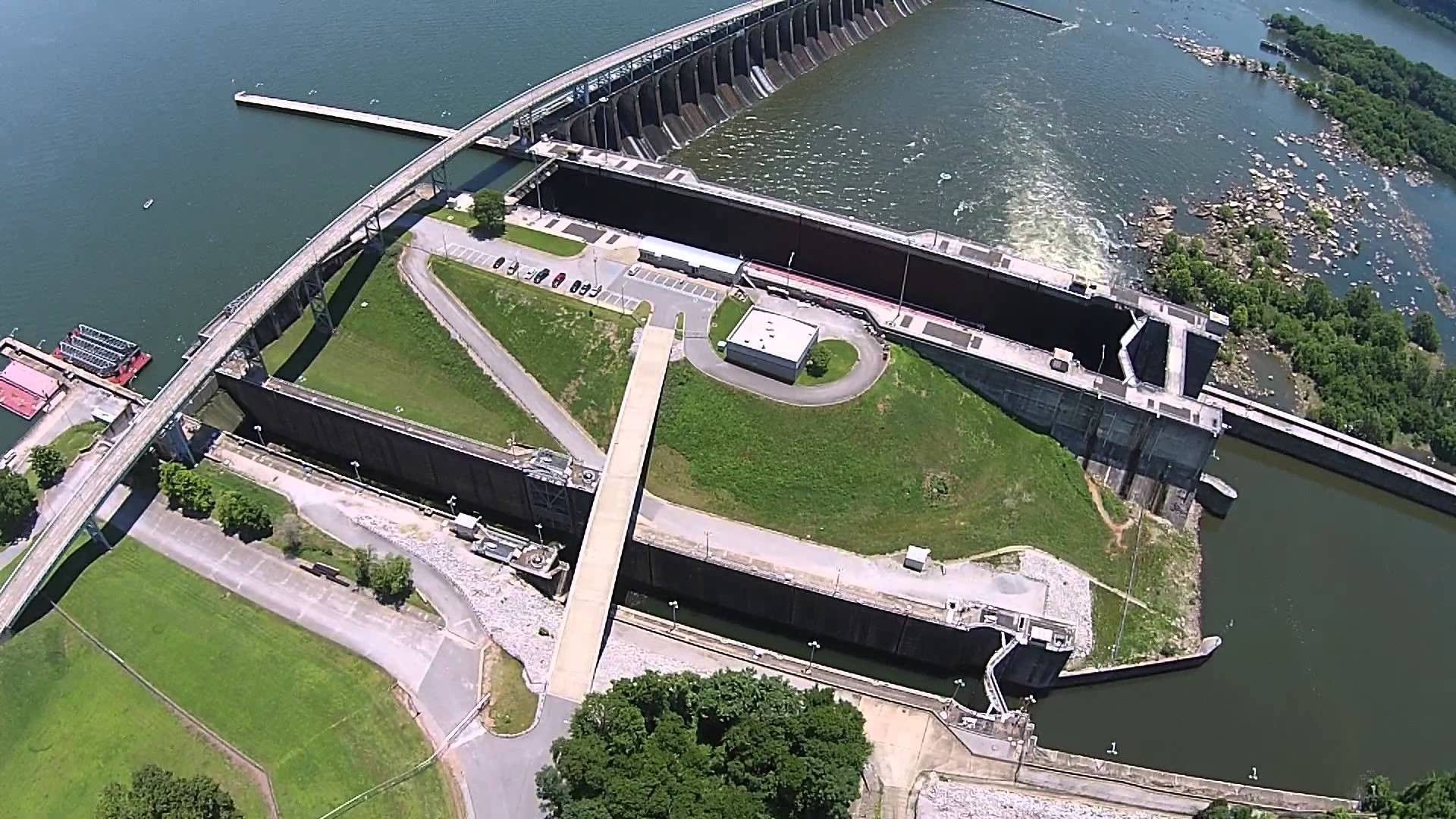The Nashville Engineer District is continuing efforts to map out a repair plan for the lower miter gates in the main chamber of Wilson Lock on the Tennessee River near Florence, Ala., after cracks in the lower portion of the gates led the district to close the lock to navigation September 26.
A Nashville District dive team has cleaned off the lower end of the gates. The district has also deployed remotely operated vehicles (ROVs) from the U.S. Army Engineer Research and Development Center (ERDC) to scan the cracks in the gates.
At the same time, the Corps will have to complete work on the downstream closure structure slot in order for stoplogs to be set and the lower end of the lock to be dewatered. That work will begin mid-October, with the goal of dewatering the lock and fully assessing damage to the lower miter gates by early December.
The Corps and the Tennessee Valley Authority (TVA) were initially concerned about the potential for instability in the lock wall adjacent to the damaged gates, but instrumentation data assessing stability of the lock chamber itself has allayed those fears.
During a stakeholders call October 8, Corps officials were asked if they would consider reopening the lock temporarily to help clear the queue.
“We are not considering any intermittent openings unless there is more information from the dive inspection that it is safe,” said Megan Simpson, the Corps’ national maintenance management team leader.
Timothy Fudge, operations division chief for the Cumberland and Tennessee River basins, asked for patience as the Corps team develops a repair plan.
“Bear with us,” he said. “We know this is a huge inconvenience, and we are working through this as quickly and methodically as possible.”
So far, though, Corps officials have not offered an estimate for when repairs will be completed and the lock reopened to navigation. A repair timeline likely won’t be identified until after ROV scans next week and the dewatering in December.
In the meantime, the Corps has staffed and is operating the smaller auxiliary lock at Wilson Lock and Dam. The auxiliary lock, which dates to the 1920s, consists of two 60-foot by 300-foot chambers in sequence, much smaller than the main lock’s 110-foot by 600-foot single chamber. The main chamber came online in 1959.
Offering a lift between 93 and 100 feet, the main chamber at Wilson Lock is the highest single lift lock east of the Rocky Mountains.



